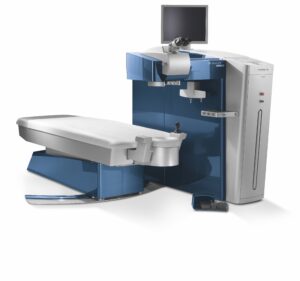The LASIK Procedure
In mere seconds, Dr. Ferguson and Dr. Wörtz can treat a lifetime of nearsightedness, farsightedness and astigmatism. Most cases typically take about 10 minutes per eye, but the bulk of that time is actually spent “prepping” the eye for surgery. Actual “laser time” ranges from 30 seconds to 1 ½ minutes.
Prior to surgery, each patient is given a dose of medication to help reduce any stress or anxiety. Being relaxed makes the whole process much more comfortable. The eye is numbed using an anesthetic drop, and then a “lid holder” is placed between the eyelids to prevent blinking. The flap is then created. During this process it is common to feel pressure, the same feeling you get when you press your fingers firmly on your eyes when they are closed.
The flap is then folded back while you look at a target light and the excimer laser painlessly reshapes the cornea within seconds. The flap is then folded back into position and self seals.
As we expect a bit of postoperative scratchiness, we pre-treat with an oral medicine, and ask that you keep your eyes closed as much as possible for the rest of the day.
All-Laser LASIK (Ziemer)
For patients with thin corneas or desire the most advanced technology, LASIK flaps can also be made with the Ziemer Femtosecond Laser. This is commonly known as “All Laser LASIK.” Laser flaps have the advantage of being thinner than mechanical flaps, which can be beneficial to individuals with thinner corneal tissue. Today, the vast majority of patients select this remarkable technology.
Custom Contoura Topography Guided LASIK

The Alcon Wavelight EX500 with Vario is the fastest and most advanced FDA approved LASIK laser available. Simply
put, it is the laser of the future, allowing a customized treatment to you, providing a result that eliminates irregularities (aberrations) in your vision and sometimes BETTER than 20/20 vision!
The benefits of Custom Contoura LASIK are worth considering. A test will be performed during your FREE evaluation process to determine if you will benefit from this advanced form of LASIK, particularly if your optical pattern shows significant irregularity.
With topography guided treatments, a 3D mapping camera will analyze 22,000 individual points on the cornea. With your custom 3D map, the laser will correct your vision while simultaneously removing irregularities that cause unwanted visual effects. After surgery, many patients will see better than they did with their glasses or soft contact lens.
PRK
Although LASIK is a fantastic procedure that changes the lives of thousands of people annually, it certainly isn’t for everyone, but fortunately, there is a vision solution for everyone. Photorefractive Keratectomy or PRK is one of these solutions. For those with excessively thin corneas, we can forego creating a flap and simply remove a circle of surface epithelium. The laser then reshapes the underlying corneal tissue just as in our LASIK patients. PRK patients, however, take longer to recover good vision as the surface cells take 3 to 7 days to regenerate, and then the surface remodels with further healing: typically vision is good at 1 month postoperatively and identical to LASIK patients vision results in 3 months. Due to the slower recovery and normal fluctuations in vision, Dr. Ferguson and Dr. Wörtz offer to perform PRK on one eye at a time...however, most patients prefer to have both eyes corrected during the first surgery . Generally speaking, final visual outcomes are identical to LASIK in 3 months.
Some laser surgeons prefer PRK over LASIK for all candidates. However, Commonwealth Eye Surgery stresses the need for careful individualized planning and ensures that the risks and benefits of each procedure are thoroughly explained. Again, the best procedure is the one that is best for you!
LASIK Flipbook
Hear What Our Patients Have to Say
